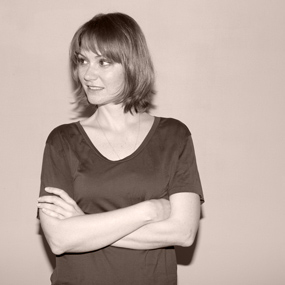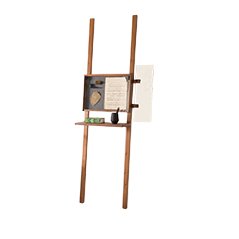Fernando Romero promotes good design in Mexico City
Great Expectations
-
Archivo Director-Curator Regina Pozo
Photo © Adam Wiseman; courtesy of the Archivo
-
Photo © Adam Wiseman; courtesy of the Archivo
-
Photo © Adam Wiseman; courtesy of the Archivo
-
Photo © Adam Wiseman; courtesy of the Archivo
-
Photo © Adam Wiseman; courtesy of the Archivo
-
Photo © Adam Wiseman; courtesy of the Archivo
-
Photo © Adam Wiseman; courtesy of the Archivo
-
Photo © Adam Wiseman; courtesy of the Archivo
-
Photo © Adam Wiseman; courtesy of the Archivo
-
Photo © Adam Wiseman; courtesy of the Archivo
-
Photo © Adam Wiseman; courtesy of the Archivo
-
Photo © Adam Wiseman; courtesy of the Archivo
-
Photo © Adam Wiseman; courtesy of the Archivo
-
Photo © Adam Wiseman; courtesy of the Archivo
-
Photo © Adam Wiseman; courtesy of the Archivo
-
Photo © Adam Wiseman; courtesy of the Archivo
-
The Archivo Diseño y Arquitectura
Photo © Adam Wiseman; courtesy of the Archivo
On a narrow street in the stucco-clad Tacubaya district of Mexico City, next door to World Heritage Site Casa Barragán, architect and philanthropist Fernando Romero is quietly building a collection that he intends to become his hometown’s first museum dedicated to national and international design.
In its current incarnation, the Archivo Diseño y Arquitectura functions as an exhibition space and storehouse for Romero’s collection of more than 1,300 diverse objects from Mexico, the U.S., and Europe spanning the early 20th century to today, and supported by an extensive library dedicated to the field of architecture. From iconic Jean Prouvé and Paulo Mendes da Rocha chairs to humbler but more ubiquitous products of mass consumption—Nike sneakers, Apple computers, and View-Master stereoscopes, to name a few—this collection embodies Romero’s own design philosophy: design has the power to enrich our everyday lives and warrants the same study and admiration as fine art.
The Archivo’s eclecticism is matched by the idealism of its mission, which supports the local community through talks, happenings, portfolio reviews, and other events. According to Archivo Director-Curator Regina Pozo, “We believe that visionary design thinking generates and advances culture and positively impacts contemporary life. We want to bring sophisticated design awareness to the D.F., to develop the market for design in support of the talented creative community here. Good design means everyone wins.”
Inspired by Romero’s and the Archivo’s participation in Mexico City’s crowded cultural calendar—the inaugural International Business Design Fair and the Abierto Mexicano de Diseño festival that just ended and the David Chipperfield–designed Jumex Museum that is about open (near Romero’s own museum design, the Soumaya)—we reached out to Romero to learn more about his approach to design practice and patronage.
Wava Carpenter: What originally attracted you to the field of architecture?
Fernando Romero: Architecture needs to solve problems and deliver useful solutions. It also acts as a reflector and translator of social, political, and cultural conditions. This complexity is what attracted me in the first place. But I wasn’t convinced I wanted to be an architect until I finished architecture school and went to Europe. There, I was incredibly lucky to get a position at OMA in Rotterdam. I got to work closely with Rem Koolhaas, just as the office was finding great success winning international competitions, as the work was moving out of the realm of the theoretical into reality. I was surrounded by a lot of very talented people, so it was a very productive period for expanding my expectations about architecture’s possibilities.
WC: How did your time working at OMA influence your own practice?
FR: Koolhaas is such an incredible architect and thinker—one of only a few who have made people think in a different way. Which is why he has played mentor to so many young architects. I learned that there is not just one way of solving a problem, that you need to stay open to see different translations. I learned that in order to have a great translation you have to conduct intense experimentations first, and then extract from a repertoire of options something that is innovative, that has its own identity in dialogue with the environment. This is our method and approach at FR-EE [Fernando Romero Enterprise].
WC: Your office and the Archivo are located next to the gorgeous house-museum Casa Barragán. What does Luis Barragán’s work mean to you?
FR: Barragán succeeded in turning something very complex into a simple aesthetic—combining the local with the global to produce a unique language. His work made a powerful statement in Latin American modernism.
WC: To what degree do you believe design principals are universal, outside of time and place? To what degree do you believe context dictates design?
FR: The meaning of context has changed radically. It’s no longer just the site, but also the metaphysics and science that surround our time. Our own perception of context has evolved to include more and more data. For us, architecture is the process of translating information into buildings.
WC: What motivated you to develop the Archivo?
FR: We love and live design, so we wanted to create the first design collection in Mexico. We believe design is evolving—moving closer to the conditions of the art world—and limited-edition pieces are becoming extremely valuable objects. After living in Europe, I realized the importance of promoting design in the community to create awareness of the huge potential of design to transform our lives. In Mexico there is a lot to do at the educational level to increase the value of design. This is the mission of Archivo.
WC: How has the culture of design in Mexico changed in recent years? Or has it?
FR: Mexico has always floated between conditions. And this sense of duality has positively influenced our architecture and design. Being a young democracy that has achieved a high level of development, especially in technology, has given us more freedom and opportunities for experimentation. The country has spawned projects that would likely have stayed on the drafting tables elsewhere!
Take for instance our Soumaya Museum: The way we modulated 1,000 different families of hexagons on the façade could not have been done in six months anywhere else in the history of architecture. The way we solved the circulation and addressed regulations would have been unthinkable outside of Mexico. This is the benefit to being open in terms of building regulations while also having a stable macro economy.
WC: What is your favorite piece of design that you live with every day, and why?
FR: I have an obsession for mobility design—bikes, cars, airplanes, or boats. I am fascinated by the logic, the performance, and the efficiencies that each of these categories achieves within their own contexts. But the object I use and love the most is a Tulip table by Eero Saarinen, my desk where I work every day.
WC: What would be your dream architectural project?
FR: Any building that can help transform the identity of a country! Only a few times in history has this happened, such as with the Sydney Opera House, or the Eiffel Tower. But the beauty of architecture is not about the size of a building, nor the program. It’s about the power of pushing the limits within a specific time and place.
-
Text & Interview by
-
Wava Carpenter
Seit ihrem Studium in Designgeschichte an der Parsons School of Design hatte Wava schon in vielen Bereichen der Designkultur den Hut auf: sie lehrte Designwissenschaft, kuratierte Ausstellungen, überwachte Auftragsarbeiten, organisierte Vorträge, schrieb Artikel und erledigte alle möglichen Aufgaben bei Design Miami. Wava lässt den Hut aber im Büro – auf der Straße bevorzugt sie ihre Sonnenbrille.
-


















 Fernando Romero's proposed design for the PH Museum
Courtesy of FR-EE
Fernando Romero's proposed design for the PH Museum
Courtesy of FR-EE


